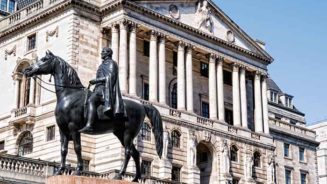The UK government’s latest IHT tax data shows record receipts for the tax year 2023/24 of £7.5bn, which is up £0.4bn on the previous tax year.
This continues an upward trend over the last two decades, with the prospect that inheritance tax receipts could top £9.5bn before the end of the decade.
In industry reaction, Rachael Griffin, tax and financial planning expert at Quilter said: “The government’s inheritance tax (IHT) receipts hit an unprecedented £7.5 billion in the last financial year, surpassing the previous record of £7.1bn.
“This significant increase has reignited discussions about the fairness and structure of the IHT system, particularly given an increasing number of middle income families now face hefty tax bills thanks to the government’s extended IHT threshold freeze.
“Despite considerable speculation that the government would look to enact IHT reform during the last year, so far all has remained quiet on this front and this morning’s figures illustrate exactly why the Chancellor would have been keen to leave it well alone. Nonetheless, the ever-increasing tax revenue from IHT presents a conundrum for the government as we approach the general election, and it is certainly an area to watch for as the various party manifestos begin to appear.
“The lowering of the headline rate of IHT from 40% would undoubtedly be met with approval from core Tory voters. However, more widely, it would likely prove unpopular given it would benefit the rich at a time when so many across the nation continue to struggle with the cost of living.
She continued: “Regardless, there remains an opportunity to address the complexities and inequities of the IHT system, notably the Residence Nil Rate Band (RNRB). The RNRB, while well-intentioned, is marked by its complexity and often excludes a significant demographic, particularly the rising number of childless elderly. As we look towards an aging population with increasing childlessness, the RNRB’s exclusionary nature becomes increasingly problematic. A more equitable and simplified IHT system involving raising the nil rate band to £500,000 would not only be fairer but more reflective of the changing demographics and societal structures of this country.
“Elsewhere, the latest figures show receipts from PAYE income tax and national insurance payments for April 2023 to March 2024 were £404.3 billion – up a whopping £24.3 billion compared to the same period a year earlier. Income tax levels remain frozen until 2028, and though the government has now introduced a significant cut to national insurance, the effects of fiscal drag will see more people moving up the income tax bands as their pay rises and the government will continue to see a marked uplift in tax take as a result.
“As the debate on IHT reform continues, it is crucial to consider the impact on middle-income families who find themselves liable for a tax historically associated with the wealthy. The Institute for Fiscal Studies recently reported that the number of estates paying inheritance tax is set to rise from 4% in 2020-21 to over 7% by 2032-33, which we estimate would result in almost 50,000 families facing IHT bills. The government must balance its fiscal responsibilities with the need for a fair and equitable tax system that does not unduly burden families during times of bereavement.”
Stacey Love, technical manager, tax, trusts and estate planning at Canada Life said: “While the trend is only on the way up, IHT continues to be a largely a discretionary tax. Many estates may not have to pay IHT at all if the various exemptions and gifts are used appropriately, and this is an area of financial planning where it really does make sense to seek appropriate financial advice.”
John Glencross, CEO and Co-Founder of Calculus, said: “IHT revenues continue to steadily rise due to the prolonged freeze on IHT thresholds until at least April 2028. March’s Spring Budget did not address IHT, therefore it is a financial planning issue that will not go away soon. One effective method to mitigate IHT for advisers and investors is through an Enterprise Investment Scheme (EIS) fund. The EIS offers inheritance tax relief, contingent upon holding shares for at least two years and at the time of death.”
The Wealth Club highlighted that while only 4% of estates are currently liable to pay IHT, the IFS estimates that the proportion of deaths resulting in inheritance tax is set to grow to over 7% by 2032–33. The number of people affected by inheritance tax will be still larger. By 2032–33, they predict that one in eight people will have inheritance tax due either on their death or their spouse or civil partner’s death.
For those that are picking up the ‘death tax tab’, Wealth Club calculations suggest the average bill could increase to £243,000 in the 2023/24 tax year, with over 31,000 families having to hand over part of their inheritance to the taxman. This is a steep 13.3% increase from the £214,000 average paid just three years ago and a 15.9% rise in the number of estates paying the tax.
Nicholas Hyett, investment manager at Wealth Club said: “It may only be paid by a small minority of taxpayers, but for those picking up the death tax tab, the bills are eye watering. And it’s not just the wealthiest families that are being dragged over the threshold for inheritance tax. Increasing house prices, coupled with threshold freezes, mean more families are getting caught out by this most hated of taxes despite their quality of living remaining unchanged.
“In the last six months the government has faced increasing calls to abolish the tax altogether, or at least to introduce radical reforms. Evidence from countries such as Sweden and Australia suggests reform could have positives aside from endearing politicians to voters. Abolishing inheritance tax has been linked with a decline in the number of businesses relocating overseas, and an increase in the number of wealthy individuals choosing to move to the country.
“In the meantime, the good news is that there are still lots of legitimate ways for individuals in the UK to pass on money free of inheritance tax.”





